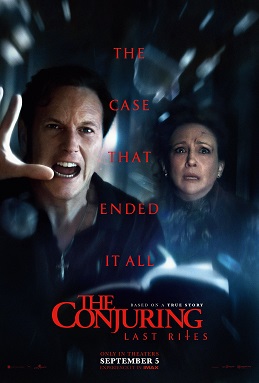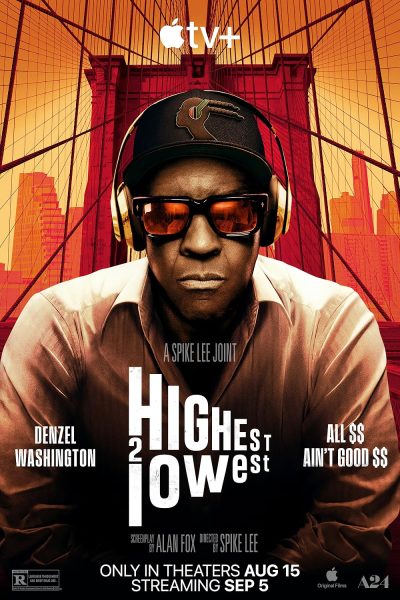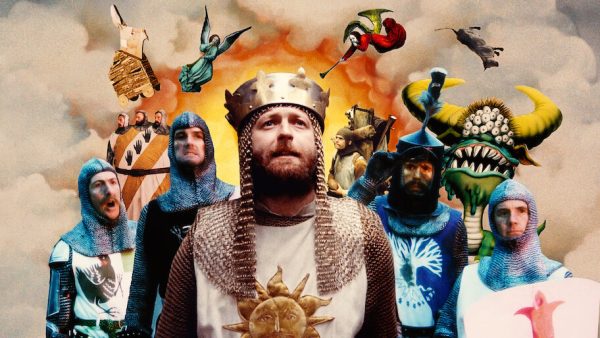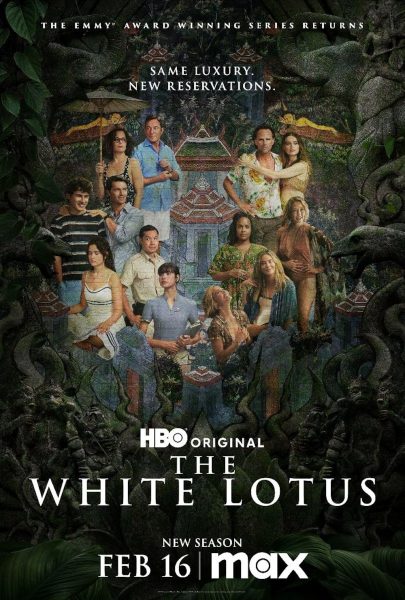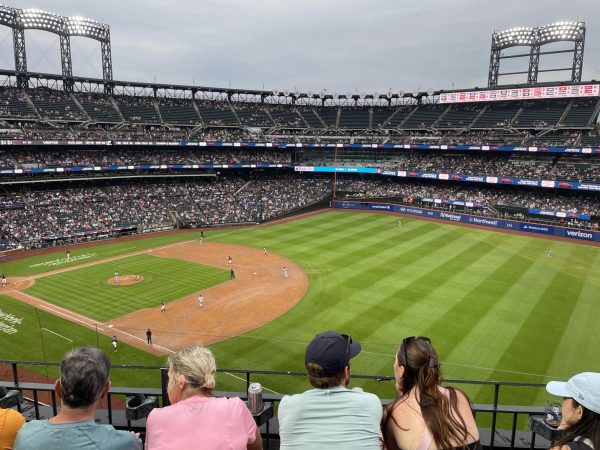How Uncharted 4: A Thief’s End Helped Define My Legacy
As we grow old, the question, in one way or another, will often linger in our minds; must all good things come to an end? Five years ago, before my 8th-grade year, I wasn’t worrying about graduating high school, where my life was headed, or which mask I was going to wear to school that day. Instead I simply had one goal in mind, obtain the Platinum trophy, meaning you get all other trophies, for Naughty Dog’s Playstation 4 exclusive Uncharted 4: A Thief’s End. It was undoubtedly a much easier time in my life, and after I had completed my goal I never really looked back.
Now, five years later, I revisit this story in the hopes of understanding why I went out of my way to get 100% of everything A Thief’s End had to offer. This game and I have a very interesting history together. I grew up with Nathan Drake, Elena Fisher, and my top dog Victor “Sully” Sullivan with the previous three main console entries in this video game franchise (and a PS Vita game if you want to get technical) being seemingly always on the television. Whether my brothers were replaying the campaigns, or going to town in the criminally underrated multiplayer from Uncharted 3: Drake’s Deception, again, these characters and stories have always been in my life, in one way or another.
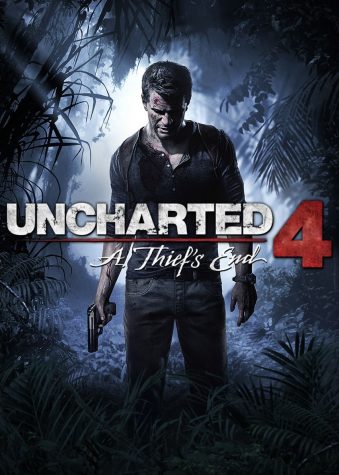
It had been around a month since the 4th and final game in Nathan Drake’s story had been released, and I was determined to get my hands on it, whatever it took. So, obviously, I bought the special edition off Amazon using my mom’s credit card without telling her, like a champ. Uh, yea, sorry about that one mom… again. When I finally got the game, after my first playthrough the credits rolled and I absolutely hated it. Then, I played it again, and again, and once more, and then another six times. In total, I have beaten this game’s campaign give or take 10 times, and have completed a no-death, crushing (the game’s hardest difficulty) speedrun, with no aim assist in 4 and a half hours. For context, on a regular difficulty the game is roughly around 15 hours long.
I preface with all of this not just to flex the fact that I was at one point really good at this game, but also to show that this is coming from the perspective of someone who truly loves this series. Another thing to add is that while there is a multiplayer and survival mode within the game, I’ll only be discussing A Thief’s End’s main campaign. Now, did the story and gameplay hold up, and is everything as good as I remember? Let’s get our hands dirty in years-old pirate treasure and find out.
The Thieves of Libertalia:
Immediately as you boot up the game, the menu is appalling and stands out from the rest. Where the other games have loud music playing and get you hyped for the journey ahead, we find here there’s none of this to be heard. It shows a pirate skeleton slowly swinging back and forth in a gibbet, with no music playing, giving the player an eerie and uneasy feeling. The contrast shows how real and serious the tone will be. It represents the game as a whole. Sure, there are awesome set pieces and action scenes, but due to the realistic tone, it all feels grounded in reality.
As all these games do, it cuts to black and puts a quote up on screen. For this game it uses pirate captain Henry Avery’s motto, “I am a Man of Fortune, and I must seek my Fortune.” Words that echo the story’s overall theme of how greed and obsession affect our lives.
Then we’re thrust right into the action, seeing Nate and a mysterious new character Sam – Nate’s long thought to be dead brother – in the middle of a terrible storm on open ocean waters being chased. The opening of the game is a complete contrast to the menu. It is loud and bombastic, but from a story perspective makes fans question, where are Sully and Elena? Who is this new character? It’s a great hook.
It then takes time to give us two chapters – what this game calls levels – with more insight into Nate’s past and what happened to his brother, and how this relates to pirate treasure. It also introduces us to new gameplay mechanics, one good one being the rope that you can swing with, a clear homage to Indiana Jones, and one terrible mechanic, crates. There are simply too many times where gameplay is halted because you have to move a crate from one place to another, but back to the story.
We learn that this has been something he and his brother have been after for a long time, which adds to the tension later in the story. Fans with keen ears with notice that chapter 2, titled “Infernal Place,” takes place in a Panamanian prison. This is the prison Nate mentions to Elena at the beginning of the original Uncharted. At the end of the chapter, we meet the game’s central villain Rafe, who you immediately root against. The game does a great job making you hate Rafe. For instance, after Sam kicks a ladder down during the prison escape, Rafe pushes Nate out of the way. At the end of the day, he’s in it for himself.
After the escape, it cuts to a beautiful ink drawn opening credits sequence, with a fantastic rendition of Nate’s Theme from the previous games. Henry Jackman composed the score for this game, as opposed to Greg Edmonson who did the other games, and he did an amazing job. We’ll talk more about the music later though. The opening credits are awesome and have dual purpose. It’s a fun way to relive the good old days for long time fans, but also catches people up if they never played the original trilogy.
When we meet up with Nate we see he’s given up the treasure hunting life and is now married to Elena, working as a deep-sea salvage expert diver, living a normal life. The game gives us good reason as to why Nate would drop his “perfect life,” it’s clear he misses the thrill. There are multiple examples of this, but my favorite can be seen with a call back to the original game’s opening, where he opens a coffin of Sir Francis Drake to find his journal discussing El freakin Dorado. Now, when Nate opens something from the depths of the water, it’s as mundane as wires of copper.
Fan service wonderfully ties into the story. In chapter 4 titled, “A Normal Life,” you have the option to look at different artifacts Nate’s collected from his past adventures, the past three games. You don’t have to look at all these items, but most players will, and it adds to the overall story. This moment and what comes soon after, when Nate meets up with Sam again, share an interesting connection. With the brothers’ reunion, it plays a somewhat depressing version of Nate’s Theme from the previous games. Both these moments signify a longing for the past, the glory days.
When the brothers do meet up again, Sam tells Nate how he got out of prison. Chapter 5, titled “Hector Salazar,” really adds to the twist with Sam later. It not only makes Nate change how he feels about his brother, but also us as an audience. While Drake is his own character, unlike someone like Master Chief, who doesn’t talk much as an attempt to let the player relate to him, we still feel cheated and lied to by Sam, especially since we actually play through his “breakout,” rather than just watch a cut scene. Sam knows his brother better than anyone and uses his greatest attribute, trust, against him.
For a long time, there was one aspect of the story I couldn’t grasp, which was the fact that Nate never told anyone about Sam and his supposed death. But replaying the story all these years later, I finally understood why. Nate didn’t not tell everyone, he just didn’t tell Elena. It’s a great way to show just how disconnected the couple are, and that there are clear signs of trouble for their relationship. This can also be seen with the fact that instead of telling Elena they need to get Henry Avery’s treasure to pay Sam’s debt to Salazar, he lies for weeks about it.
Chapter 6, titled “Once a Thief,” sees Nate reunite with his long time friend Sully, and his introduction is awesome. We see just his cigar in a dark room, and as Nate and Sam approach he says, “You know what I love about partying with a bunch of crooks? Nobody cares if you smoke indoors.” Classic Sully. The game does a great job at really understanding each character and respecting them.
Also in this chapter, the game introduces us to the story’s weakest component, its secondary villain Nadine. Nadine is such a terrible villain, she takes so much away in what should be an emotional story, and destroys it. Her boss fights aren’t very fun from a gameplay perspective, and again she contributes nothing for the story. The only reason she’s there is because the script says so. You could take her character out of the game and it wouldn’t change much.
We see throughout the game how different the level design is in comparison to the other games. The sequence in this chapter where you have to evade guards shows this well, as you have more than one path to take and can choose to go for a stealth approach or simply go in guns blazing. It rewards the player for exploring levels and taking different routes. This gives you good reason to replay the story.
Overall, I think chapter 11, titled “Hidden in Plain Sight,” is my favorite, showing the best of both the gameplay and story. It starts with Nate and Sully exploring a tower in order to ring four small bells, and a huge one at the very top, to unlock a door. Not exactly how I lock my doors, but whatever. This part gives the player a lot of freedom of how to approach climbing the tower, even to the point where you can get on the outside of it and get to the very top.
When you unlock a door leading to another puzzle, we see Nate finds a clue that he doesn’t yet have time to explain, as the duo find out that Rafe has their location, along with Sam’s. This leads to my favorite sequence of gameplay, moving from an on-foot chase, to driving a car, to using the rope to get onto the enemies’ vehicles, to then jumping from car to car, then getting on the back of Sam’s motorcycle, taking out a massive armoured mini-tank. It’s a lot of fun incorporating pretty much every aspect of gameplay into one section, and is incredibly impressive.
After this, Sam, Sully, and Nate all meet back outside their hotel where they share their findings. The clue Nate found earlier is finally revealed and confirms his suspicion that Henry Avery joined with other pirates to pool their treasures together on the island of Libertalia. When they go inside their hotel room to discuss what the next move is, they find Elena in probably the most heart wrenching scene in the game. It hurts to see Nate try and explain himself, but the worst reaction to this comes from Sully, when he takes a step back and simply says, “I’m sorry.” After being with these characters for so long, this is easily one of the hardest cutscenes to watch for me.
They eventually get to the island, and chapter 13, titled “Marooned,” has a cutscene between Sam and Nate that makes an interesting call back to Uncharted 3. In that game, after Sully and Nate narrowly escape a collapsing château, Sully sits, questioning why they’re even going after that game’s treasure while Nate catches his breath telling Sully this is just who he is. In A Thief’s End, we see a role reversal from the cutscene from Uncharted 3, but this time Nate is in Sully’s place, even from the way it’s staged, asking Sam if this is really worth it.
Then a few chapters later, after a second fight with Nadine, Sam’s secret is revealed. He lied about the breakout with Salazar and had been working with Rafe for two years before he recruited Nate. As soon as you trust him he turns his back on Nate. It then makes sense why we spent so much time with Nate not in the adventure earlier in the game, to show how much is really on the line, unknown to Nate. There were several moments that were foreshadowing this one, but my favorite comes from a small dialogue exchange between Sam and Sully in chapter 10. The two are discussing how much Sam is really going to give Salazar, to which Sully says, “You never tell your partner how much a job is really worth.”
The brothers get split up and we flashback to Nate as a kid, and the more I think about this chapter the more I dislike it. They go to steal their dead mother’s belongings, but this section tells us how Nate got his last name Drake, and that his mother was a great explorer. To me, this takes away from the previous games, especially the first one. There’s a really powerful cutscene in the original where Nate finds the body of Sir Francis Drake, and to honor him gives him his ring back which reads Sic Parvis Magna, which translates to Greatness from Small Beginnings. This really didn’t need to be added, but I can definitely see why people like it.
Elena eventually finds Nate and they decide to go after Sam. From the elevator section in chapter 17, titled “For Better or Worse,” to New Devon, Elena and Nate discuss their feelings about how Nate handled running off on another adventure. It makes them feel like real people, and because we’ve had four games with them, it really makes us want to see them work it out.
Next, Elena and Nate find the founders of Libertalia. During this sequence, Elena watches Nate as he becomes that person she met in the first Uncharted. As he figures out what happened to the pirate captains, she realizes that Nate really is meant for a life of adventure. After going off on one final history tangent putting all the pieces together, Nate looks over at Elena and says, “I’m really sorry, I’m sorry.” She pauses for a moment and then says, “It’s okay.” Really powerful dialogue that has clever subtext.
Continuing to Sam, Elena asks, “Do you think the treasure’s still on the ship?” Nate responds, “I think… I think it doesn’t matter anymore.” Finally, Nate gets what Sully and the other characters in the last game were trying to teach him, sometimes an obsession over treasure will make you lose everything you care about, something Sam doesn’t understand yet. This also mirrors the story of Henry Avery.
You eventually find Sam, get split up from him, and have to find him again. This time it’s in Henry Avery’s ship where you confront and fight Rafe. Naughty Dog has never been known for their final boss fights, or just in general, and here it is definitely a solid start. A good boss fight should test the player on what they’ve learned throughout the story in one climatic battle. While it is fun, it’s just hitting Triangle, Circle or Square at the right time. On the other hand, it’s a much better final fight than the last three games.
Playing the game’s epilogue, years after the events of this game, we see Elena and Nate worked things out and Sully and Sam are off on adventures. The game requires you to look through the artifacts again, this time with some pirate treasure, through the eyes of Nate and Elena’s daughter, Cassie. As she’s doing this, Nate and Elena catch her in the act and finally tell her about their adventures. It plays a different version of the track during the reuniting of the brothers, instead of ending on a sad note, it ends on an upbeat one, to show while life can be crazy, full of surprises, and struggles, if you work hard it CAN get better.
I’ve said this before when discussing something I hate, but I want to say it again in a different light. There are times in each of our lives when we must answer a question. A question that challenges our own morality. I asked myself one of these questions after replaying the excellent campaign in A Thief’s end; must all good things come to an end? I couldn’t help but tear up rewatching this cutscene again, It’s a bittersweet moment and even though I’d love more stories with him, Nathan Drake deserved a happy cliché ending.
A Thief’s End teaches us that there is more to life than finding what you want, but why you want it, and the importance of looking at the big picture and seeing what really matters in our lives. Whether I like it or not, Nathan Drake and his final adventure will always impact me as a writer, person, and my overall legacy. Movies will always be my passion, but this game helped me get to that point. My favorite film of all time is Indiana Jones and the Kingdom of the Crystal Skull, my least favorite is Jurassic World: Fallen Kingdom, but Uncharted 4: A Thief’s End just might be my favorite story ever told.

"This is where the fun begins." If you're a big fan of film, TV, or the world of entertainment as a whole, you've come to the right place. This will be...

